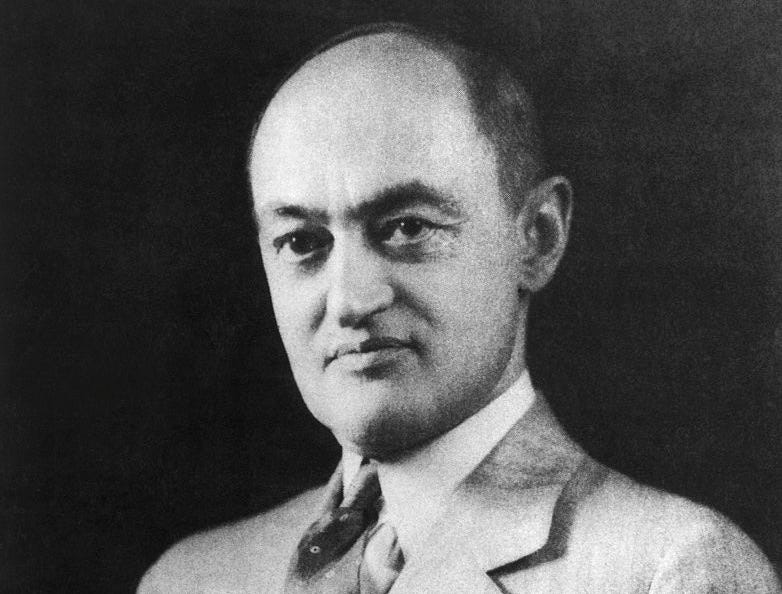Joseph Schumpeter on Creative Destruction: Why Capitalism May Destroy Itself
Have you ever felt like you're caught in a whirlwind, where everything is constantly changing? New technologies pop up overnight, old jobs disappear, and the ground beneath your feet feels less and less stable. This isn't just a feeling; it's a fundamental reality of modern capitalism, a process brilliantly explained by the Austrian economist Joseph Schumpeter. But Schumpeter's vision wasn't a celebration of endless progress. In fact, he believed that the very engine of capitalism – its relentless drive to innovate – contained the seeds of its own destruction. Is it possible that the system that creates so much wealth and progress could, in the end, undermine itself? Let's dive in and find out.
The Engine of Destruction: Creative Destruction Defined
Schumpeter, in his seminal work "Capitalism, Socialism, and Democracy," introduced the concept of "creative destruction." What exactly does this mean? Essentially, it's the process by which new innovations constantly revolutionize the economic structure from within. Imagine a booming industry, say, horse-drawn carriages in the late 19th century. Suddenly, the internal combustion engine arrives. The carriage industry, seemingly secure, is decimated. Factories close, jobs disappear, and fortunes are lost. But from this destruction, something new emerges: the automobile industry, transforming transportation and countless other aspects of life.
Schumpeter argued that this process isn't just about replacing old products with new ones. It's about a constant, relentless churn. It’s about entrepreneurs, the "creative destroyers," who relentlessly seek out new ways of doing things. This "gale of creative destruction," as he called it, is the core dynamic of capitalism. Without it, there’s stagnation. With it, there's progress, but also… instability.
The Entrepreneur: The Driving Force of Change
At the heart of creative destruction is the entrepreneur. Schumpeter saw them not just as business owners, but as agents of change. They are the ones who introduce new products, new methods of production, and new markets. They are the disruptors, the innovators, the risk-takers who are willing to challenge the status quo. Their efforts bring forth progress, but also, inevitably, the decline of the old ways.
But how does this relentless innovation translate into potential destruction? How could such dynamism lead to capitalism's downfall?
The Seeds of Demise: Bureaucratization and the Erosion of Support
Schumpeter believed that the very success of capitalism would eventually undermine itself in two key ways: through the routinization of innovation and the rise of an anti-capitalist intellectual class. The first involves the shift from the individual entrepreneur to large, bureaucratic corporations. Over time, as capitalism matures, innovation becomes less about the daring individual and more about research and development departments within large firms. This shifts the focus to incremental improvements rather than disruptive change.
And perhaps even more significantly, Schumpeter foresaw the rise of an "intellectual class" – a group of academics, journalists, and other opinion-makers, who, ironically, are often enabled by the very system they criticize. This class, he argued, would be critical of capitalism, not because of economic failure, but because of its perceived social and cultural consequences. The perceived inequities, the relentless pursuit of profit, and the constant disruption of life would breed resentment and, ultimately, undermine public support for capitalism.
“The capitalist process… tends to destroy the framework that protected it.” - Joseph Schumpeter
The Political and Social Consequences
This erosion of support wouldn't necessarily lead to economic collapse, Schumpeter argued. Instead, it would lead to a political shift. The intellectual class, combined with the social pressures generated by creative destruction, would push for policies that restrict capitalism, such as increased regulation, higher taxes, and the expansion of the welfare state. These policies, while perhaps intended to mitigate the negative consequences of creative destruction, would, in Schumpeter's view, ultimately stifle the very forces that drive economic growth and innovation.
This isn't to say Schumpeter believed in some inevitable, predetermined outcome. His analysis wasn't a prophecy, but rather a warning – a complex and nuanced understanding of the inherent tensions within capitalism.
Is Schumpeter Right? Reflections and Relevance Today
Are Schumpeter's predictions playing out today? Look around. We see corporations investing heavily in R&D, the rise of powerful tech companies, and the constant disruption of industries. We see a vocal intellectual class questioning the status quo and demanding change. We see governments wrestling with issues like income inequality, automation, and the future of work.
The video below provides a great introduction to these ideas, using real-world examples:
Schumpeter's insights are incredibly relevant for anyone trying to understand the forces shaping our world. He encourages us to think critically about the long-term consequences of our actions and to consider the potential pitfalls of even the most successful systems. Are we creating the conditions for capitalism to self-destruct, or can we navigate the challenges of creative destruction in a way that preserves its benefits while mitigating its downsides?
Unlock deeper insights with a 10% discount on the annual plan.
Support thoughtful analysis and join a growing community of readers committed to understanding the world through philosophy and reason.
Conclusion: Facing the Gale of Creative Destruction
Joseph Schumpeter's analysis of creative destruction is not just an economic theory; it's a profound observation about the nature of change, progress, and the human condition. He forces us to confront the uncomfortable truth that even the most successful systems are vulnerable. His work reminds us that progress and destruction are inextricably linked. The key is not to eliminate destruction – that’s impossible – but to manage it, to adapt to it, and to ensure that the benefits of innovation are shared as widely as possible.
Schumpeter didn't offer easy answers. He offered a framework for understanding the complexities of capitalism and a challenge to think critically about its future. His legacy is a call to embrace the dynamism of creative destruction while remaining vigilant about its potential consequences. Understanding Schumpeter is not just about understanding economics; it's about understanding ourselves and the world we are building.



